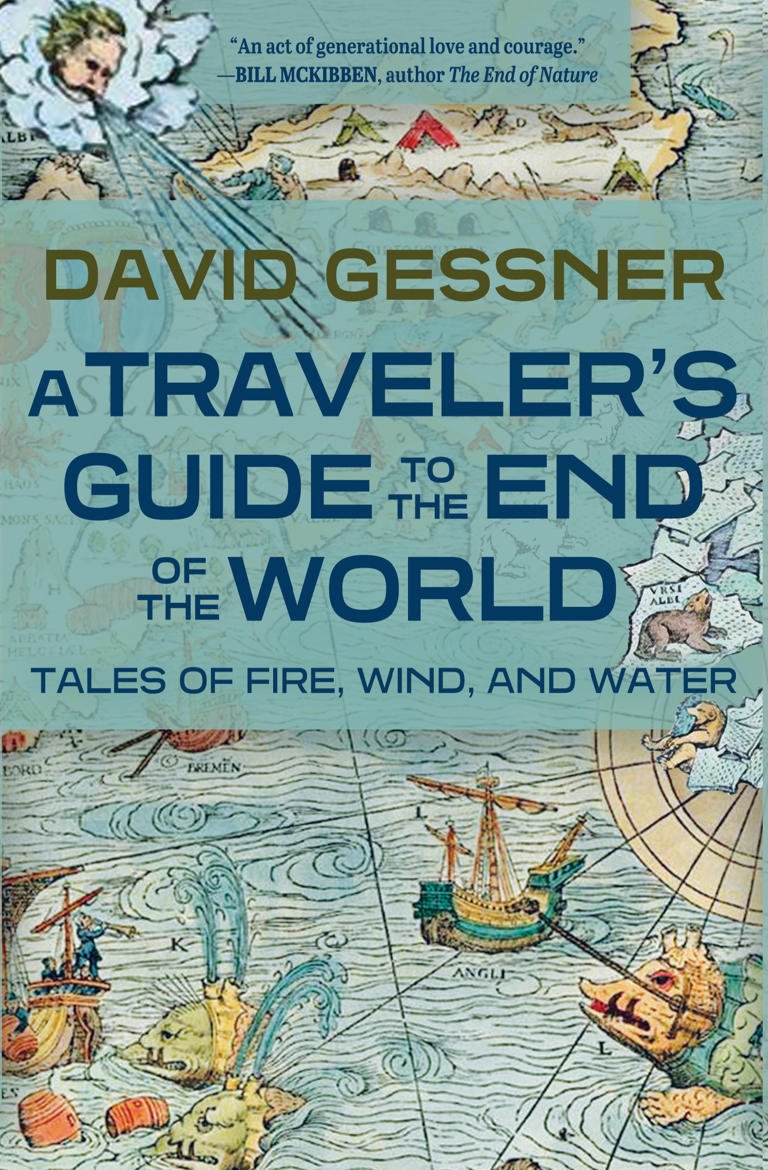Story by Dennis Drabelle • Yesterday

In his 1950 acceptance speech for the Nobel Prize in literature, William Faulkner said, “I believe that man will not merely endure; he will prevail.” The title of David Gessner’s new book, “A Traveler’s Guide to the End of the World: Tales of Fire, Wind, and Water,” suggests a 21st-century update of Faulkner’s dictum: Man will prevail but might not endure.
A veteran writer on the environment, Gessner evokes the havoc resulting from human-caused climate change by taking us to a host of melting, blazing, flooded or desiccated places, including the Mississippi River Delta; his hurricane-prone hometown of Wilmington, N.C.; the Colorado River, in the throes of becoming Colorado Creek; Miami, New York and other coastal cities vulnerable to what geology professor Hal Wanless predicts will be “an eight- to ten-foot sea level rise by the end of the century. Maybe eleven to thirteen.”
This is a lot to assimilate, and Gessner admits to being a writer who likes to “jump around.” He allowed himself a year and a half of jumping and note-taking, a period in which, “without trying very hard,” he witnessed one climatic disaster or its aftermath after another.
In one passage he pulls things together with the single word “never,” which he kept hearing from people he met. “‘Never have we had so many fires.’ ‘Never has it been so hot.’ ‘Never have we had so many juniper trees die.’” To which might be added a “never” that cropped up as this review was being written: drifting smoke from fires in Nova Scotia, which for the first time ever gave New York the worst air quality of any city in the world.
For the most part, however, Gessner organizes his material around a question he put to one expert after another. What kind of world will Gessner’s daughter, Hadley, be living in four decades from now, when she turns 60, his own age when he started working on the book?

David Gessner, author of “A Traveler's Guide to the End of the World.”© Debbie Lorenc
Here again Manhattan comes into play: Hadley is currently an undergraduate at NYU. “There are many visions for the future of the city,” her father reports. “Almost all of them are watery.” For in addition to coping with rising sea levels, residents can expect to be hit by more hurricanes. Meteorologists rank New York, “despite the relatively low odds of a major storm, as the country’s second most dangerous major city, behind only the hurricane bull’s eye of Miami and just ahead of New Orleans.”
For all its evocative prose and knowledgeable commentary, however, “A Traveler’s Guide” can be frustrating to read. The lack of an index is an inconvenience, and the book loses focus for a time when Gessner dwells on the events of Jan. 6, 2021, and the reactions thereto of his former college classmate and friend Rep. Jamie Raskin (D-Md.). Effective as Raskin was in defending the constitutional process and denouncing the attempted coup by the Proud Boys and their ilk, neither he nor that day of infamy has much to do with Gessner’s “Tales of Fire, Wind, and Water.”Read more from Book World
Nevertheless, “A Traveler’s Guide” is replete with thought-provoking set pieces. For instance, Gessner offers sardonic wisdom from one of his most relied-upon sources, Orrin Pilkey, an emeritus professor of earth sciences at Duke. On a visit to Long Beach Island on the New Jersey shore, Pilkey rails at the stupidity of using federal relief refunds to rebuild houses destroyed by Hurricane Sandy in 2012. “It was, as Orrin had said, like giving money to people to help them rebuild on a train track, and then telling them to just keep their fingers crossed and hope the train doesn’t come again.”
He draws an apt comparison to Edward Abbey’s 1975 novel, “The Monkey Wrench Gang.” Those fictional anarchists, you may recall, conspired to blow up Glen Canyon Dam on the Colorado and recover the splendid scenery and valuable ecosystem beneath the impounded water. “Now it isn’t just monkey wrenchers who are seriously talking about closing down the dam,” Gessner writes, “and … drought appears to be doing what explosives did not,” i.e., making the great lost canyon visible again.
He also describes a surreal phenomenon in the mountains of Nevada. “Two sunsets glow in front of me. One actual one and the other, further south, something that looks like a sunset but isn’t. The reds and purples and swirling blacks … of the southern pseudo-sunset are the reflection of a fire, not the fire of the sun.”
In the end, Gessner takes a small step back from his “end of the world” rhetoric. He consoles himself, and possibly us, by recalling that all the warnings from his sources are informed conjectures, not certainties. “Because, strangely,” he writes, “one of the most reassuring things is the fact that we really don’t know where we are heading.”
Dennis Drabelle, a former contributing editor of Book World, is the author, most recently, of “The Power of Scenery: Frederick Law Olmsted and the Origin of National Parks.”
A Traveler’s Guide to the End of the World
Tales of Fire, Wind, and Water
By David Gessner
Torrey House. 359 pp. $21.95, paperback
No comments:
Post a Comment